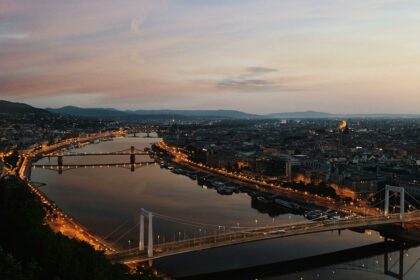Amidst the grand boulevards of Vienna, a magnificent edifice stands as a testament to the city’s rich history and architectural prowess – the Wien Rathaus, or Vienna City Hall. This imposing Neo-Gothic landmark, with its intricate facade and soaring tower, serves as the seat of the city’s government and a captivating symbol of Vienna itself.
Architectural Design: Influences and Style
The Wien Rathaus was the masterful creation of architect Friedrich von Schmidt, who drew inspiration from the secular Gothic architecture of Flanders and Brabant. This is evident in the building’s ornate details, pointed arches, and towering spires reminiscent of the grand town halls of Belgium. The Neo-Gothic style, popular during the 19th century, represented a revival of medieval architectural forms, symbolizing civic pride and historical continuity.
Schmidt’s design for the Rathaus also cleverly incorporated a touch of the Baroque style. The structure is arranged around seven grand inner courtyards, providing ample light and space within the building, a design element characteristic of Baroque architecture.
A Monumental Construction
Construction on the Vienna City Hall began in 1872 and was completed in 1883. The building’s sheer scale is remarkable. It covers an area of over 19,000 square meters and features an impressive 2,987 rooms. To construct this masterpiece, approximately 30 million bricks and 40,000 cubic meters of natural stone were utilized.
The central tower of the Rathaus is a particular point of interest. Rising to a height of 98 meters, it is crowned by the iconic ‘Rathausmann’ statue. This iron figure of a knight, holding Vienna’s banner, has become one of the most recognizable symbols of the city.
More than Just a Government Building
While serving as the administrative center of Vienna, the Rathaus has historically been a venue for significant events. Its grand halls have hosted numerous dignitaries, balls, and celebrations over the years. Moreover, the Rathausplatz, the square in front of the City Hall, is a popular spot for year-round events, including Vienna’s famous Christmas Market and the open-air ‘Vienna Ice Dream’ skating extravaganza in winter.
Interior Splendor
Although the exterior of the Wien Rathaus is captivating on its own, a step inside reveals equally magnificent interiors. The Festsaal (Festival Hall) is particularly striking, with its ornate decorations and grand scale, making it an ideal location for special events. Additionally, the City Council Chamber and the Mayor’s office are beautifully appointed spaces, reflecting the building’s important function.
The Vienna City Hall stands as an enduring architectural gem, a testament to both the city’s rich history and its commitment to grandeur. Its Neo-Gothic facade, intricate details, and impressive scale make it a must-visit landmark for anyone exploring the architectural treasures of Vienna.


